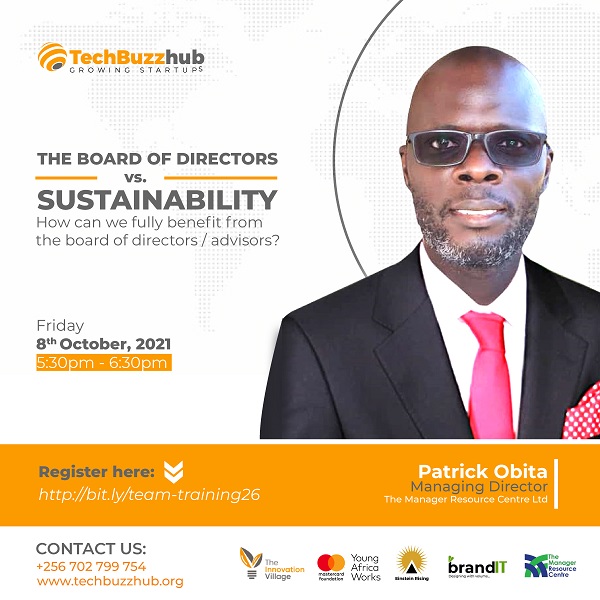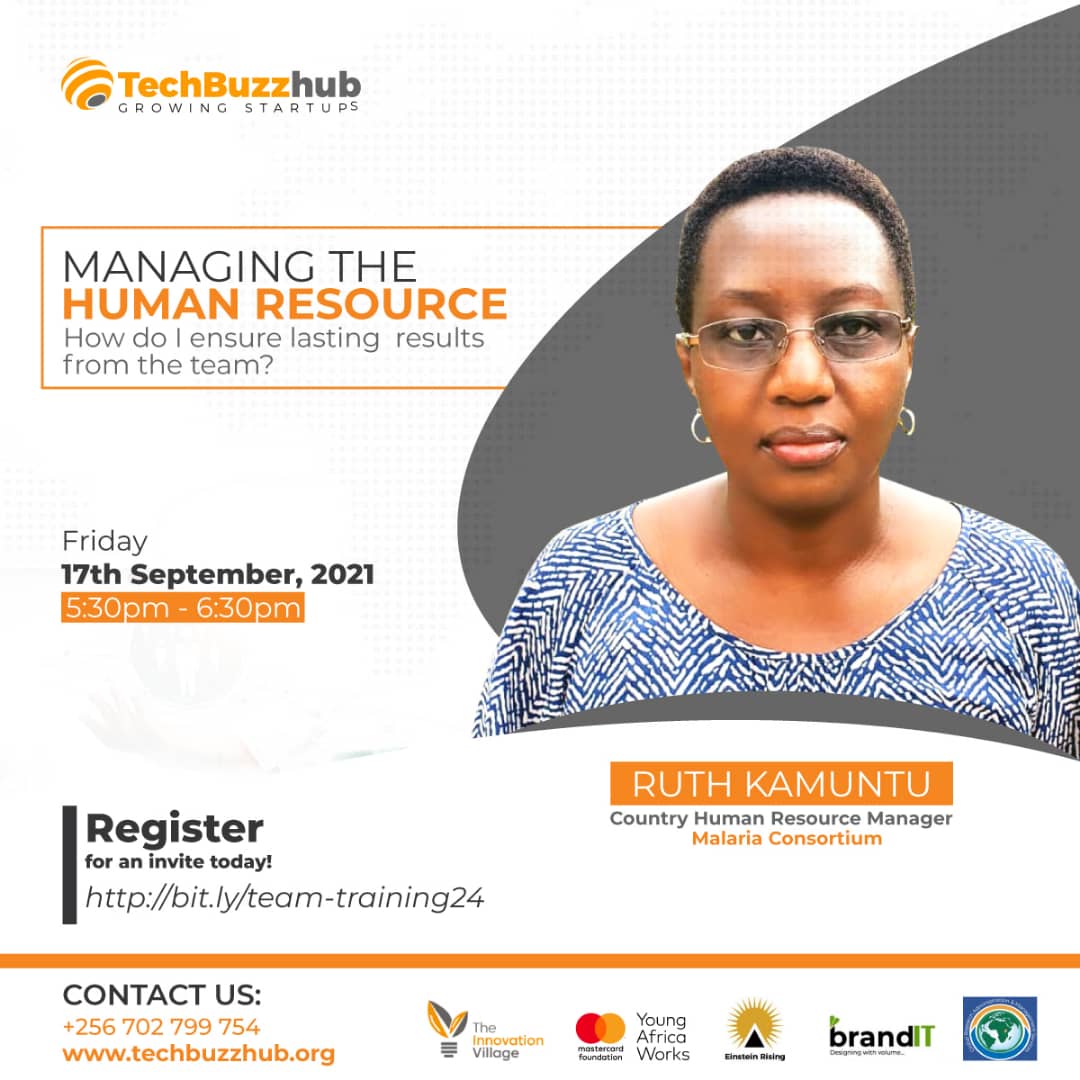THE BUSINESS PROPOSAL – TRAINING
These trainings are brought to you by TechBuzz Hub in partnership with Mastercard Foundation, Young Africa Works and Innovation Village
“The way to get started is to quit talking and begin doing.” Walt Disney, founder of Disney.
The only way a startup is going to wade through the waves of stiff competition from big rivalries irrespective of the new inventions he is bringing into the market, is by focusing and having a plan. This plan is backed up by a good proposal. This time round we would like to bring your attention to a business proposal and what it can do for your startup.
Ideas in this piece are borrowed from the webinar held last week on Friday, where Vanesa Shimwe, an entrepreneur, working in a number of organizations including the Young Africa Works, illuminated on the topic of business proposal. In a brief virtual discussion this is what she had to say. Disclaimer; some of these and are not in her exact words.
A business proposal is a document showing a little description of a series of activities that an entrepreneur is going to do in a given period of time. It related to a business plan, but delving further into the subject you shall understand that they are different.
When drafting a business proposal very many things have to be put in place or into consideration. For example, planning, writing, presentation, and sometimes even implementation.
Planning. As a young entrepreneur you are looking to attract a given group of clients, who are already established in their area of expertise. Here you are, looking forward to having them join your business or enterprise. What you have to do is to research the problems that the client is looking forward to solving, what solutions do you have for these problems, what does your audience want.
Usually when drafting a proposal your intentions must always be satisfying the expectations of your clients, your audience, the target population amidst other stakeholders in your line of business. But key to all is understanding what your client wants. Because you are trying to convince him/her that you are good at what you do, and that you are the best option they have in the market over your competition. So you need to know them well enough.
Doing extensive research makes you knowledgeable about your ecosystem, and what you can do to have a winning proposal.
Writing. Drafting a proposal comes immediately after making an extensive research. At this stage you know exactly what you want, what problem your client is looking forward to solving, and what solutions you have at hand.
At this stage you need to be sure that you are well understood, therefore use appropriate language, be clear, and simple. Avoid using a lot of words, informal words, slangs must always be avoided. Preferably use simple understandable English to describe and explain one’s ideas.
- Have an introduction, containing who you are, what you do, the problem at hand that you clearly have a solution to, and the possible solution.
- State the people to whom the proposed solution is going to affect or effect. The target population for if it is a product it may end up in the market.
- Cost the proposal. In your body one of the things you are to include in your proposal are the items you need to put in place while implementing your proposal. This will usually determine how much support you expect from a donor or a client. It should be based on the market conditions.
- Review your proposal. Usually it’s advisable to have someone review it for you. It is also good to have someone who is in the same line of business of your proposal.
Its also advisable to have at least 6 pages of your proposal. The more-straight to the point it is the easier you will be able to present it to the clients, or target audience.
Now, as you are writing, the question arises, what specific things to include in a proposal.?
Ms. Vanesa replies to this by saying that simply, research. After making thorough research on the various things that you are going to base your proposal on, that usually comprises getting to know your audience. Literally moving in their lives. It depends on who your audience is, if the target population is the Karamojong, then you have to know what they love and hate, how they live their day to day lives, so as to be in position to provide the most efficient solution to the problem you have cited.
After writing your proposal you might be busy trying to figure out how do I present my proposal.
This is the most important part of the proposal. This is the part that actually proves that you didn’t waste your resources in writing a proposal, why? Because you are selling it out to someone who does not really care. So the best you do here makes the whole work a success. Like it is usually said, first impressions are very important, especially when you want to build trust. You surely will want to do it in the most effective way possible.
Ms. Vanessa gives a few tips on how to effectively present your proposal.
- You could use pitching/ pitch deck. (a powerpoint presentation slide that helps describe your business, clearly presenting the problem and the solution. This refers to a number of slides you could use to present to the target audience. People like donors usually have little time, a small attention span, therefore try as much as possible to present your major points and catch points especially benefiting the audience before any other. (key points first)
- If you are to use email, make the email as simple and straight to the point as possible.
- If your option is face to face presentation, it’s good to articulate how the proposed solution benefits the target audience more than yourself. In other words, people like selflessness. If you portray that to a potential donor or client, then in one way or another you have higher chances of being successful. Be careful not to be rushed to saying everything all at once remember the attention span is small for most people.
Being an era of technology and innovations a young entrepreneur would also like to know whether there are tools in place that can ease the proposal drafting. Ms. Vanessa says that well, there are tools like “proposalsify”, such help you fill in what you need to, by guiding you on every stage using templates. However, what they may not help you with is understanding your business for you.
What are the chances that someone can get funding out of his proposal? In other words, what are the benefits of a proposal.
President Barack Obama once said, “when tough times come, we don’t give up, we stand up”. As an experienced person in proposal writing, Ms. Vanessa tells us, that if you expect every single proposal of yours to be a success, then you are not in the real world. She says at the time she started writing proposals, some colleagues who had done it before her told her it would even take her 20 proposals to get one successful one. But the bench mark is done give up, but stand up.
It is also true that you can get funding on your very first proposal. The most important thing is not in success but in failure. Most people get discouraged after failing to get funding from one proposal. The beauty is – it’s your first time as a startup, the more you keep writing others the more you are exposing your potential to grow to the audience, and trust me with time it will yield.
The benefits are that you get exposure as a company, a startup, and also that you get funding once your target population has bought your idea of a solution you presented for the problem.
When does your business need a proposal? One of the reasons why most start up proposals are not successfully funded or do not get funding, is because the ideas of the proposed solutions are not tested. Ms. Vanessa encourages young entrepreneurs to test their ideas, to see whether they are workable and how much statistics can defend that fact. That is what many people out there want to know. Very few are actually moved by brilliant ideas that are not tested.
How do you balance your project figure with the organization you are going out for (funding)?
By advising entrepreneurs to look out for their audience earlier, Ms. Vanessa was particular to mean that it involved knowing the amount, the detail figures. However, what drives your figure is the solution. Making sure that your solution is enticing and that you are the best option they have over your competition, pushes the figures, and they usually follow. Researching on that organization is the only way before you attach the figures. Remember they are not looking out for you or your company, but you on the other hand are.
For a business proposal, as a startup it is easier to draft a winning proposal where your solution is already tested, but success is not always guaranteed. Therefore, continuous trials are the only road to take. When you succeed you will not care about how many times you failed. And you will be focused on expanding more and more. A good business proposal is streamlined from a good business plan. We shall look at this next.
Related Posts
Leave a Reply Cancel reply
Categories
- Art (6)
- Business (22)
- Clients (2)
- Design (1)
- Entrepreneurship (22)
- Events (28)
- Innovation (8)
- Inspiration (17)
- Motivation (7)
- Startups (22)
- Tips & tricks (6)
- Uncategorized (2)





